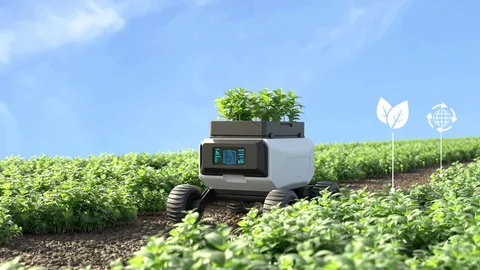Precision agriculture has revolutionized modern farming by integrating technology to optimize crop production, reduce waste, and improve sustainability. While large-scale farms have widely adopted these innovations, small-scale farmers are increasingly exploring precision agriculture for its potential benefits. This article delves into the opportunities and challenges of precision agriculture for small-scale farmers, highlighting how it can transform their agricultural practices.
Understanding Precision Agriculture
Precision agriculture refers to the use of technology—such as GPS, sensors, drones, and data analytics—to monitor and manage farm activities with greater accuracy. The goal is to apply inputs like water, fertilizers, and pesticides precisely where and when they are needed. This method minimizes resource waste, lowers costs, and boosts productivity.
Opportunities for Small-Scale Farmers
Enhanced Resource Efficiency
One of the biggest advantages of precision agriculture for small-scale farmers is the efficient use of limited resources. By applying inputs only where necessary, farmers can reduce costs on seeds, fertilizers, and water, making their operations more sustainable and economically viable.
Improved Crop Yields and Quality
Precision farming techniques enable farmers to monitor soil health and crop conditions in real time. This data-driven approach helps identify issues early—such as nutrient deficiencies or pest infestations—allowing timely interventions that can significantly improve crop yield and quality.
Access to Market Information and Support
Modern precision agriculture technologies often come with platforms that provide farmers with weather forecasts, market prices, and expert advice. Small-scale farmers can leverage this information to make better planting decisions, optimize harvest times, and negotiate better prices, ultimately enhancing their income.
Challenges Faced by Small-Scale Farmers
High Initial Investment Costs
Although precision agriculture offers long-term savings, the initial cost of technology like drones, sensors, and GPS devices can be prohibitive for small-scale farmers. Limited access to credit and financing options further complicates adoption.
Technical Knowledge and Training
Many small-scale farmers lack the technical expertise to operate precision agriculture tools effectively. Without proper training and support, these technologies can be underutilized or misapplied, reducing their potential benefits.
Infrastructure and Connectivity Issues
Precision agriculture relies heavily on data and connectivity. In many rural and remote areas, poor internet access and lack of infrastructure pose significant barriers to implementing these technologies.
Strategies to Overcome Challenges
Government and NGO Support Programs
Government initiatives and non-governmental organizations can play a crucial role in subsidizing equipment costs, providing training, and improving rural connectivity to help small-scale farmers adopt precision agriculture.
Collaborative Models
Farmers’ cooperatives and shared resource models allow small-scale farmers to pool resources, share equipment, and access technology collectively, lowering individual costs and risks.
Customized and Scalable Technologies
Developing affordable, user-friendly, and scalable precision agriculture solutions tailored to small-scale farmers’ needs can enhance adoption rates and ensure technology is accessible to all.
Conclusion
Precision agriculture for small-scale farmers presents a promising path toward more efficient, sustainable, and profitable farming. While there are significant challenges such as cost, training, and infrastructure, the opportunities it offers—ranging from better resource management to improved yields—make it a worthwhile pursuit. Collaborative efforts among governments, technology providers, and farmer communities are essential to unlock the full potential of precision agriculture for small-scale farmers worldwide.


